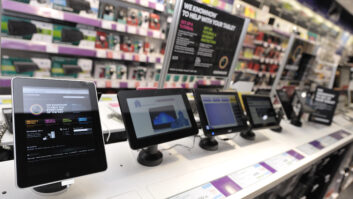Widespread problems with embedded software intoday’s more complex cellphones, particularly smartphones, is preventing the cellphone market from reaching its potential, according to a research report that surveyed 90 embedded-software suppliers and cellular industry executives.
Embedded-software problems result in product delays and phones laden with bugs, said Accenture, an embedded-software services company that teamed up with the Economist Intelligence Unit to produce the study. Software bugs force retailers to spend time addressing customer complaints, sending phones to a service center, and handling their return. Product delays frustrate consumers who walk into stores looking for anticipated products, Accenture said.
“These problems directly affect smartphone retailers in various ways related to image, branding, performance, reliability, customer retention, business growth and strategy,” Accenture said.
The time spent by retailers dealing with consumers’ malfunctioning phones could be significantly reduced if more phones were equipped with Firmware Over The Air (FOTA) capability, which enables carriers to upload firmware upgrades to phones over the cellular airwaves to debug a handset, said Abhijit Kabra, Accenture’s senior executive of product engineering and development. Only about 10 percent of cellphones feature this capability, which became available two to three years ago and is being deployed at a “steady pace” but not a “radically fast pace,” Kabra told TWICE.
Over-the-air software downloads enable consumers “to order the software that fixes the problem or problems through their own smartphone by calling an operator,” he said. “The software upgrade travels directly into the smartphone email file.” FOTA thus “reduces the time the retailer has to spend addressing these problems and increases the time the retailer can spend on other aspects of the business, such as generating revenues.”
Even with widespread FOTA deployment, however, “some of this over-the-air interface software can’t even solve some specific cellphone problems,” Kabra told TWICE. “So those 10 percent that do have the interfaces still tend to have other software problems.”
Besides accelerating FOTA adoption in handsets, the cellular and embedded software industries have to get their act together to overcome other problems, Accenture said. In its survey, for example, Accenture found that 46 percent of surveyed embedded-software manufacturers admit they deliver their products to market late; 88 percent admit they do a poor job testing products; and 81 percent admit they don’t work well with other companies and other industry organizations
“Delays are rampant,” Kabra said. “That means many cellphone retailers are facing situations in which customers come into their stores asking for smartphones they have heard or read about that will be available on a certain date. When these customers find out the products aren’t in retail stores yet, they tend to get angry and frustrated. This hurts the relationship, trust and reputation that retailers have with their customers.
“Worsening the problem, when the smartphones do become available in retail stores, they often have software bugs that need ironing out,” he continued. “One main reason for this is the devices have not been sufficiently tested for reliability and high-performance.” Again, “retailers take heat from customers in these situations and hurt their own businesses as upset customers look elsewhere for retail stores with higher-performing and more reliable smartphones.”
Poor collaboration between wireless infrastructure manufacturers, smartphone manufacturers and carriers is also hurting retailers, Kabra said. These groups “are underachieving working together.” If retailers know about these issues, they could work closely with the other players to improve collaboration, he said.
“Increased product functionality has come at a steep price for manufacturers,” said Accenture senior manager John McConnell. “The pervasiveness of embedded software means devices are more complex than ever. This complexity often translates into a need for more product testing, a longer and more expensive product development process, and lower product quality and reliability — just the opposite of what customers want.”
All of this multi-functionality, he said, “increases the demands on embedded software developers, boosting their need for collaboration, better testing procedures, and standardized work procedures.”













